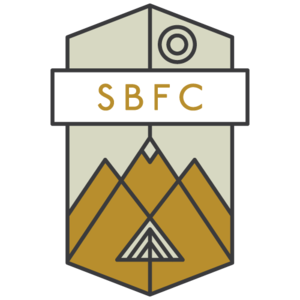Connor Adams
Nez Perce-Clearwater Powell Lead Wilderness Steward
Final Season Hitch - Weir Creek and Jerry Johnson Hot Springs
It has been a long time since I first learned the rudiments of the outdoor ethic that is commonly referred to as Leave No Trace. As a kid exploring the woods of coastal Maine and the mountains of the Adirondacks, I remember frequently hearing the phrase, from my parents, from other hikers, and from society at large, “take only pictures, leave only footprints”. That became the basis of my own personal code of behavior once I grew up and started venturing further and further into our public lands. That motto is a good start for a responsible way to recreate in the outdoors, but the folks at the Leave No Trace Center for Outdoor Ethics will tell you that it’s only the beginning.
For my final hitch with SBFC this season, I was gratified to take part in one of the Leave No Trace Hot Spots. Every year, the science and advocacy non-profit sponsors a team of traveling trainers to visit 20 “hot spots” across the country. These hot spots are places in our network of public lands that have seen a lot of visitation and a lot of human impacts, and which can greatly benefit from hands-on education, collaboration, and brainstorming. The LNT center works with partner groups, land managers, and volunteers to assess the human impacts to each hot spot, educate the public about LNT, brainstorm creative solutions for the increased impacts that these areas are sure to see, and lead a day of service at the sites themselves.
Of the hundreds of hot spots nominated for 2019, our own Route 12 corridor was chosen, specifically the very popular hot springs at Jerry Johnson, Weir Creek, and Stanley. The week began by hashing out the problems with the areas at Powell Ranger Station. The Leave no Trace Trainers Erin and Brice facilitated a meeting and brainstorming session with staff from Forest Service Recreation management, Forest Service Wilderness Rangers, a Watershed Restoration Ecologist who works for the Nez Perce Tribe, and representatives from SBFC. The following day, the conference room population tripled as folks from Forest Service and SBFC Trail Crews and Recreation Specialists joined in for an engaging and informative session of Leave No Trace programming. I’ve been in the world of conservation and natural resources for five years now, and I like to think I have a pretty good handle on LNT, but I learned quite a lot from this session. All the data and science that the Center uses to back up their recommendations I found particularly illuminating, and I know it will be a lot easier to educate the public with that science under my belt.
Over the weekend, we were lucky enough to be joined by students and staff from the University of Idaho in Moscow and Washington State University in Pullman, representing their Outdoor Programs. The students, Forest Service staff, and I participated in another round of programming detailing the seven principles of Leave No Trace (1. Plan Ahead and Prepare, 2. Travel and Camp on Durable Surfaces, 3. Dispose of Waste Properly, 4. Leave What You Find, 5. Minimize Campfire Impacts, 6. Respect Wildlife, and 7. Be Considerate of Other Visitors.) I was surprised to see that many of the students had never heard the phrase “leave no trace” before, but glad to see how engaged and eager they were to learn about it. It’s one thing to round out the education of a group of conservation workers who are already familiar with Leave No Trace, but another thing entirely to guide the next generation through responsible use of our public lands.
On Saturday, the Forest Service staff and the folks from the University of Idaho began the six mile hike into Stanley Hot Springs, where they would be working to alleviate the human impacts there, and I joined Erin, Brice, Courtney and Krissy from SBFC, and the students from the University of Washington to work at Weir Creek and Jerry Johnson Hot Springs. At these sites, we improved the trail so erosion would be lessened and sensitive vegetation saved, we decommissioned a number of social trails and campsites by naturalizing them and dismantling fire rings, buried a lot of human waste, and picked up dozens of pounds of trash. Most importantly, our staff and volunteers were on hand to talk to the public about these areas and about Leave No Trace on a very busy Saturday. I’m confident that many folks went home with a good deal more knowledge about responsible use of their public lands.
Everything I learned, taught, and participated in this week is a long way from “take only pictures, leave only footprints.” Everyone’s outdoor ethic is constantly evolving, as it should be, to keep up with new science and data, and new challenges that our public lands face from their 1.8 billion visits every year. I’m glad to be armed with even more knowledge about how to behave in the backcountry, and even more glad to have a new toolbox of skills and programming to pass this knowledge on to others.






























